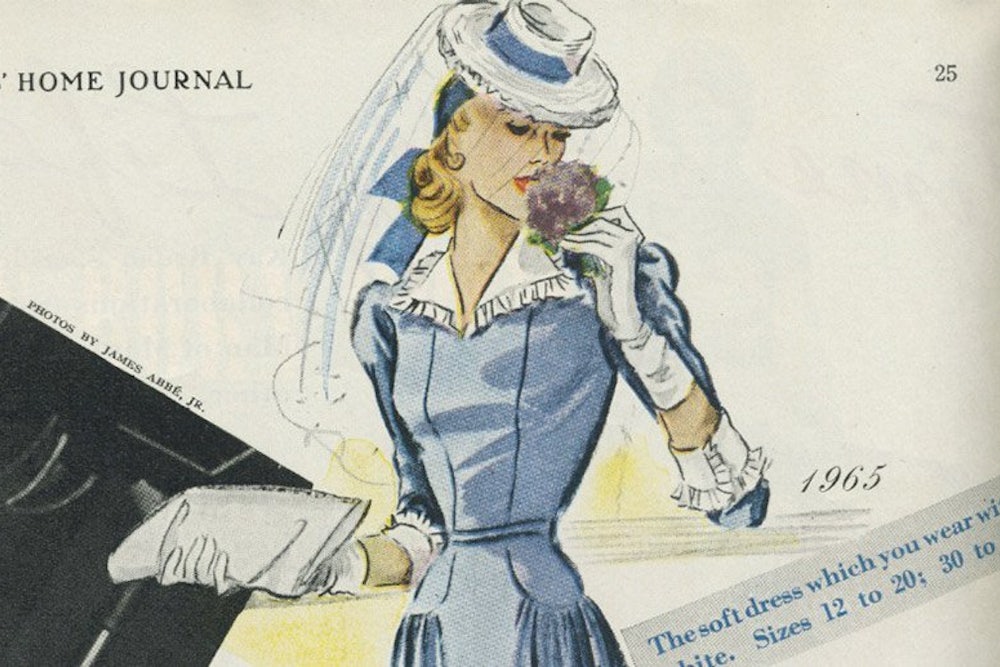Someone has just sent me a copy of an American fashion magazine which shall be nameless. It consists of 325 large quarto pages, of which no less than 15 are given up to articles on world politics, literature, etc. The rest consists entirely of pictures with a little letterpress creeping round their edges: pictures of ball dresses, mink coats, step-ins, panties, brassières, silk stockings, slippers, perfumes, lipsticks, nail polish—and, of course, of the women, unrelievedly beautiful, who wear them or make use of them.
One striking thing when one looks at these pictures is the overbred, exhausted, even decadent style of beauty that now seems to be striven after. Nearly all of these women are immensely elongated. A thin-boned, ancient-Egyptian type of face seems to predominate: narrow hips are general, and slender, non-prehensile hands like those of a lizard are quite universal. Evidently it is a real physical type, for it occurs as much in the photographs as in the drawings. Another striking thing is the prose style of the advertisements, an extraordinary mixture of sheer lushness with clipped and sometimes very expensive technical jargon. Words like suave-mannered, custom-finished, contour-conforming, mitt-back, inner-sole, backdip, midriff, swoosh, swash, curvaceous, slenderize and pet-smooth are flung about with evident full expectation that the reader will understand them at a glance. Here are a few sample sentences taken at random:
“A new Shimmer Sheen color that sets your hands and his head in a whirl.” “Bared and beautifully bosomy.” “Feathery-light Milliken Fleece to keep her kitten-snug!” “Others see you through a veil of sheer beauty, and they wonder why!” “An exclamation point of a dress that depends on fluid fabric for much of its drama.” “The miracle of figure flattery!” “Molds your bosom into proud feminine lines.” “Isn’t it wonderful to know that Corsets wash and wear and whittle you down… even though they weigh only four ounces!” “The distilled witchery of one woman who was forever desirable… forever beloved… Forever Amber.” And so on and so on and so on.
A fairly diligent search through the magazine reveals two discreet allusions to gray hair, but if there is anywhere a direct mention of fatness or middle-age I have not found it. Birth and death are not mentioned either: nor is work, except that a few recipes for breakfast dishes are given. The male sex enters directly or indirectly into perhaps one advertisement in twenty, and photographs of dogs or kittens appear here and there. In only two pictures, out of about three hundred, is a child represented.
On the front cover there is a colored photograph of the usual elegant female, standing on a chair while a gray-haired, spectacled, crushed-looking man in shirtsleeves kneels at her feet, doing something to the edge of her skirt. If one looks closely one finds that actually he is about to take a measurement with a yardstick. But to a casual glance he looks as though he were kissing the hem of the woman’s garment—not a bad symbolical picture of American civilization, or at least of one important side of it.
